Gait Instability: An In-depth Exploration


Intro
Gait instability is a complex phenomenon that affects individuals across various age groups and backgrounds. It often serves as an indicator of deeper health issues and can significantly impact one's quality of life. For older adults, this instability can lead to falls, loss of independence, and a decrease in overall health. Understanding the intricacies of gait instability is crucial for healthcare professionals, researchers, and caregivers to develop effective assessment and treatment strategies.
This article seeks to elucidate the multifaceted aspects of gait instability. We will dive into its definitions, explore the myriad causes behind it, and discuss the various assessment methods employed in both clinical and research settings. Moreover, we will investigate potential treatment options and emphasize the implications of gait instability in daily life, particularly for aging populations. By providing a detailed narrative, we aim to contribute to a deeper understanding of this increasingly relevant health concern.
Understanding Gait Instability
Gait instability concerns many sectors, from healthcare to daily living. This topic holds significance because it encompasses various aspects affecting not only physical capability but also quality of life. Understanding how gait instability occurs illuminates its physiological, neurological, and psychological dimensions. It also reveals the impact on individuals' independence and mobility, influencing their overall well-being.
One crucial element to recognize is that gait instability is not solely a symptom of aging; it often signifies underlying medical conditions, both neurological and orthopedic. As such, acknowledging the symptoms can lead to timely interventions, improving functional outcomes for individuals.
Understanding gait mechanics assists in identifying risk factors for instability. Knowing these factors allows healthcare professionals to implement strategies to minimize risks, enhance balance, and improve coordination. As we explore this article, we will delve into definitions, causes, and various assessment methods. Each section will highlight essential elements related to gait instability, offering insights into treatments and lifestyle alterations that can significantly benefit those affected.
Definitions and Terminology
Gait refers to the manner or pattern of walking, which can be influenced by multiple factors. Gait instability describes a loss of balance or difficulty in walking, leading to unsteady movements. To grasp the full scope of gait instability, comprehensive definitions are necessary.
- Gait Cycle: The period from one heel strike to the next of the same foot. This cycle indicates efficiency in movement.
- Balance: The ability to maintain the body's center of mass over its base of support is crucial for determining gait stability.
- Postural Control: The process of maintaining body alignment both during movement and while stationary. This is essential for preventing falls.
Understanding these terms aids in communicating effectively within clinical and research contexts. Recognizing the significance of definitions is crucial as it lays the groundwork for further exploration of gait instability's complexities.
The Importance of Gait in Daily Activities
The role of gait in everyday life cannot be overstated. Walking is a primary mode of transportation for many, influencing how individuals engage with their surroundings. Gait impacts various daily activities from basic movement to social interaction.
- Independence: A stable gait enhances an individual's ability to perform daily tasks without assistance, maintaining autonomy.
- Health: Regular walking contributes to physical health, promoting cardiovascular fitness and overall mobility. When gait becomes unstable, it can lead to sedentary behavior and subsequent health complications.
- Social Interaction: Navigating spaces safely allows for social participation. Instability can result in avoidance of social activities due to fear of falling, leading to isolation.
Understanding how gait impacts these areas emphasizes the need for attention to gait stability. Individuals, especially in aging populations, face challenges when stability diminishes. Thus, examining gait closely can help intervene early, improving outcomes and fostering a better quality of life.
Gait instability is not just a physical ailment; it influences emotional well-being, independence, and social connections.
Causes of Gait Instability
Understanding the causes of gait instability is crucial in our exploration of the topic. Gait instability often is not just a single issue but a manifestation of various underlying health conditions. A comprehensive grasp of these causes can help in effective diagnosis and treatment planning. This section will elaborate on multiple contributing factors, emphasizing their significance within the broader context of gait instability.
Neurological Conditions
Neurological conditions play a major role in contributing to gait instability. These disorders affect the brain, spinal cord, and peripheral nerves. The disruptions present in these systems can lead to significant challenges in maintaining balance and coordination.
Parkinson's Disease
Parkinson's Disease is characterized by its impact on motor control. Individuals often experience tremors, stiffness, and bradykinesia, which directly contribute to their gait instability. The key characteristic of this disease is the degeneration of dopamine-producing neurons in the brain. Its inclusion in this discussion is beneficial as it highlights how a neurological factor can drastically alter mobility. One unique feature of Parkinson's Disease is the phenomenon known as "festination," where patients start walking faster as they struggle to keep their balance, presenting significant disadvantages for mobility and safety.
Cerebral Palsy
Cerebral Palsy results from brain damage that occurs during pregnancy, birth, or shortly after. It manifests in different forms, one being spastic cerebral palsy, where muscle stiffness hinders movement, thus complicating gait. The primary aspect to highlight here is the variability in movement abilities among individuals with cerebral palsy. The distinct feature of muscle tone abnormalities makes it an important point for this article. This condition often leads to developmental challenges, impacting the overall quality of life significantly.
Multiple Sclerosis
Multiple Sclerosis (MS) is a progressive disease of the central nervous system that disrupts communication between the brain and body. This disruption can lead to periods of dizziness and balance issues, which contribute to instability while walking. The primary characteristic of MS is the formation of scar tissue, or sclerosis, on the nerves. Understanding its role in gait instability is important because it emphasizes how fluctuating symptoms can influence mobility. A unique aspect of MS is its unpredictable nature, leading to periods of remission and exacerbation, which can confuse individuals about their mobility limitations.
Orthopedic Issues
Orthopedic issues also significantly affect gait stability. Various conditions can impact bone and joint functions, leading to altered gait patterns.
Arthritis
Arthritis is an inflammatory condition affecting joints, causing pain and stiffness. It tends to be prevalent among older adults, contributing to mobility limitations. The key feature of arthritis is the inflammation around the joints. Its relevance in this article is crucial as it is a common cause of chronic pain. A unique factor is that different types of arthritis, such as osteoarthritis and rheumatoid arthritis, can influence mobility in varied ways, complicating treatment plans.
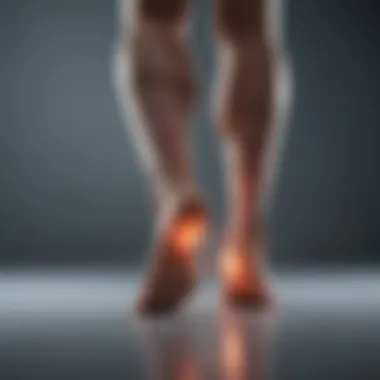
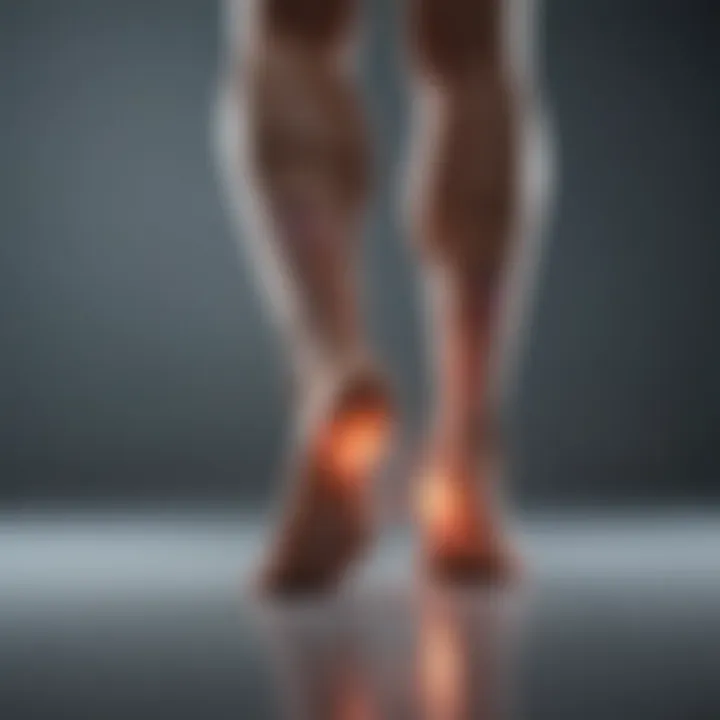
Fractures
Fractures can severely limit mobility, especially in the lower extremities, leading to gait instability. They might arise from accidents, falls, or in some cases, osteoporosis. The primary characteristic of fractures is the acute pain and the need for immobilization during recovery. Including this topic adds value since understanding the impact of fractures on gait helps in proactive care and rehabilitation. One potential disadvantage is that fractures can lead to long recovery times, thereby heightening the risk of inactivity and further gait problems.
Joint Instability
Joint instability occurs when ligaments surrounding a joint are unable to support it. This can be particularly prevalent in conditions like Ehlers-Danlos syndrome. The importance of joint instability in gait analysis is profound, as it directly correlates with balance and control issues. Its unique feature is the variability in symptoms – some may experience chronic instability while others might have acute episodes. This can create complex challenges in rehabilitation strategies.
Vestibular Disorders
Vestibular disorders hinder the body's ability to maintain balance and spatial orientation. This directly contributes to instability while walking. Common vestibular disorders include Meniere's disease and labyrinthitis. People with these conditions often experience vertigo, leading to a fear of falling. Understanding vestibular disorders is essential as they show how balance is not solely a biomechanical issue but also a perceptual one.
Sensory Deficits
Sensory deficits can significantly compromise gait stability, particularly deficits in proprioception and vision. Proprioception is the body's ability to sense its position, while vision provides essential feedback during movement. Individuals with compromised sensory input can often find it challenging to maintain balance or coordinate movements effectively. Recognizing the role of sensory deficits offers insights into how rehabilitation can be tailored to improve these functions, potentially restoring better gait mechanics.
Psychological Factors
Psychological factors also yield substantial effects on gait stability. Conditions such as anxiety and depression can lead to alterations in movement patterns.
Anxiety
Anxiety can lead to heightened awareness of one’s surroundings, which can disrupt natural movements. This characteristic creates a specific challenge for those suffering from anxiety. The unique feature of anxiety's physical manifestations, such as muscle tension, can directly affect mobility and balance. Incorporating this factor highlights how mental well-being is intricately linked to physical stability.
Depression
Depression often results in reduced motivation and energy, contributing to poor mobility overall. Its key characteristic is a pervasive sense of lethargy that can impair engagement in activities requiring movement. Depression’s unique aspect is the variance in its presentation among individuals, which can complicate treatment strategies. This factor is critical, underscoring that managing gait instability also requires attention to mental health.
Assessment and Diagnosis
The assessment and diagnosis of gait instability are critical in understanding its underlying causes and determining the appropriate management strategies. A thorough evaluation can reveal not just the immediate factors affecting gait but also the broader context of the individual's health status. Assessing gait instability involves a multi-faceted approach, integrating clinical observations, subjective experiences, and objective measurements. The blend of these methods allows healthcare professionals to form a comprehensive picture of the patient's condition and tailor interventions accordingly.
Clinical Assessments
Physical Examination
Physical examination is often the first step in assessing gait instability. It involves direct observation of the patient's movements, posture, and muscle tone. This method is fundamental because it allows the clinician to identify visible abnormalities in gait patterns. One key characteristic of physical examination is its ability to provide immediate feedback on a patient's functional status. The benefits of this approach include its non-invasive nature and the ability to assess a full range of motor functions in real time. Unique to physical examination are the clinician's insights drawn from the patient's body language and movement strategies, which can offer significant clues toward diagnosing underlying issues.
However, an important disadvantage is that physical examinations can be inherently subjective. Different clinicians may interpret the same movements differently, leading to inconsistencies in diagnosis and treatment options. Thus, while valuable, this method should be complemented by other assessment forms to ensure a more robust evaluation.
Patient History
Patient history is an essential component of the clinical assessment, encompassing information about past medical conditions, family history, and lifestyle factors. This method helps establish a continuum of health information that informs the current state of gait stability. A notable characteristic of patient history is its focus on subjective experiences, allowing healthcare providers to understand the issues that may not be immediately visible. The advantages of gathering a detailed patient history include identifying risk factors and contributing causes that may not present during physical assessments.
However, collecting this information can be labor-intensive and may vary significantly depending on patient self-reporting accuracy. There is also a risk of missing key details, particularly if the patient is unable to articulate their symptoms effectively.
Objective Measurement Tools
Force Plates
Force plates are advanced tools used to quantify ground reaction forces during standing and walking. They contribute significantly to the assessment of gait instability by providing objective data on balance and weight distribution. A key characteristic of force plates is their ability to measure specific parameters such as gait speed, timing, and stability. This makes them a favorable choice for precise gait analysis. Unique features of force plates include their capability to track changes over time, which helps in assessing the effectiveness of treatment interventions.
Nevertheless, there are disadvantages as well; force plates may require specialized training for proper use and interpretation of data. Additionally, the accessibility to force plates can be limited, making it hard for some clinics to apply this technology uniformly.
Motion Capture Systems
Motion capture systems employ cameras and sensors to record a person's movements in three dimensions, providing detailed analyses of gait patterns. This technology is beneficial in diagnosing gait instability by capturing subtle changes that may be missed through standard assessments. The key characteristic of motion capture systems is their comprehensive nature, allowing for a multidimensional view of patients' mobility. The advantage here is the high level of detail, which can assist in creating personalized treatment plans.
Conversely, the complexity of the technology can pose challenges. Motion capture systems usually require sophisticated equipment and setup, as well as expertise in data interpretation. These factors may limit their widespread application in everyday clinical practice.
Subjective Assessment Methods
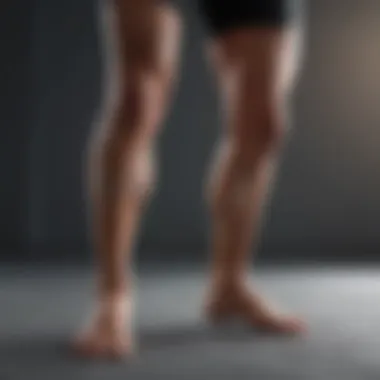
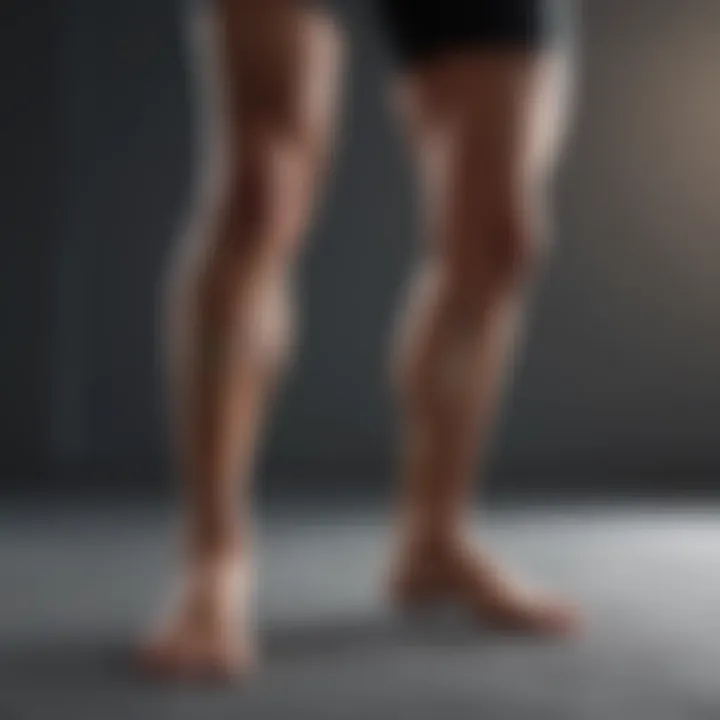
Patient-reported Outcomes
Patient-reported outcomes involve gathering information directly from patients regarding their experience of gait instability. This method is crucial as it emphasizes the individual’s perspective on their condition and its impact on daily life. The key characteristic of patient-reported outcomes is their focus on quality of life and personal satisfaction, making them valuable for a holistic understanding of gait instability. Advantages include capturing essential details that might not be apparent in clinical settings.
However, one disadvantage is that patient-reported outcomes may be influenced by emotional or psychological states, potentially skewing results. They also rely heavily on the patient's ability to articulate their feelings accurately, which can introduce variability into the data.
Observation Scales
Observation scales are standardized tools used to assess gait stability and related factors through structured observation by trained clinicians. These scales are important as they provide a systematic approach to identifying gait abnormalities. A key characteristic is their objectivity—utilizing pre-defined criteria helps reduce variability in assessments. The advantages of using observation scales include ease of training for assessors and the ability to compare results across different patients or populations.
On the downside, observation scales can be limited by the clinician's interpretation of movements. The effectiveness of this method could also be influenced by factors such as the clinician's experience and the patient's condition on the day of assessment.
In summary, the integration of various assessment strategies is essential for a comprehensive understanding of gait instability. Relying on a single method may lead to incomplete evaluations, underscoring the importance of a multidisciplinary approach.
Impact of Gait Instability
Understanding the impact of gait instability is crucial in grasping its broader implications on individuals and society. Gait instability affects not just physical mobility but also influences emotional and social aspects of a person's life. It can lead to a reduced quality of life, and understanding this can help in effective intervention strategies.
Quality of Life Implications
Gait instability can severely deteriorate a person's quality of life. Individuals may experience a loss of independence due to their inability to walk steadily. This can lead to a reliance on caregivers, which might cause feelings of frustration or inadequacy. Moreover, gait instability often correlates with increased psychological stress, anxiety, and depression. The fear of falling can be especially limiting, restricting individuals from engaging in activities they once enjoyed.
Research indicates that individuals with gait instability often report lower levels of life satisfaction. There is also an increased risk for depression and anxiety. Addressing these quality of life concerns is essential for health professionals looking to provide a holistic approach to treatment.
Social and Economic Consequences
The social and economic consequences of gait instability extend beyond the individual. When people struggle with their mobility, they often withdraw from social interactions. This withdrawal can lead to loneliness and social isolation, which are detrimental to mental health.
Caring Costs
Caring costs represent a significant financial burden for families. Individuals with gait instability may require personal assistance for daily tasks, which increases household expenditures. This care may not be fully covered by insurance, placing additional strain on family budgets. Hiring aides or nursing services is a growing expense for many families, impacting overall financial stability. It’s important to highlight how caring costs affect not only the immediate family but also local economies.
Lifestyle Restrictions
Lifestyle restrictions significantly accompany gait instability. Individuals may refrain from participating in social activities out of fear of falling or discomfort. This restriction curtails opportunities for exercise and socialization, leading to further physical decline and isolation. It can lead to a vicious cycle where reduced activity worsens one’s condition. Understanding these lifestyle changes is crucial in tailoring rehabilitation approaches to include social engagement and physical activities that are both safe and enjoyable.
Fall Risk Assessment
Conducting a fall risk assessment is vital in managing gait instability. Understanding the likelihood of falls can guide treatment options and preventive strategies. This assessment includes both subjective methods, like patient interviews, and objective measurements, like balance testing. A comprehensive fall risk assessment can lead to targeted interventions, reducing the chances of falls and their associated complications.
"Fall risk assessments are essential for identifying individuals at high risk and tailoring interventions to improve their stability and mobility."
In summary, the impact of gait instability is profound, touching various facets of life. From the quality of life issues to social and economic ramifications, recognizing these factors is vital for developing effective management strategies.
Management Strategies
Management strategies are critical in addressing gait instability. They encompass various interventions, from preventive measures to rehabilitation approaches, enabling individuals to maintain mobility and improve their quality of life. The appropriate strategies can significantly impact both health outcomes and emotional well-being. These strategies can prevent the onset of more severe complications, reduce fall risks, and promote independence in daily tasks.
Preventive Measures
Environmental Modifications
Environmental modifications involve adjusting an individual’s surroundings to enhance safety and reduce the risk of falls. This aspect of preventive measures plays a pivotal role in minimizing hazards that contribute to gait instability. Key characteristics of these modifications include the removal of obstacles, installation of grab bars, and improved lighting.
These changes can be a beneficial choice because they create a safer living environment, especially for older adults or those with existing mobility issues. The unique feature of environmental modifications lies in their ability to directly address physical barriers, making the home or community more accessible. The advantage is a notable decrease in fall-related injuries, while the disadvantage can be the cost and effort required for substantial alterations, which may not always be feasible.
Assistive Devices
Assistive devices are tools designed to aid individuals in maintaining mobility and stability. These include canes, walkers, and ankle-foot orthoses. Their key characteristic is providing support and balance, which can be essential in preventing falls. Assistive devices are a popular choice due to their accessibility, often requiring minimal training for effective use.
A unique feature of these devices is their adaptability; they can often be customized to meet an individual’s specific needs, enhancing user comfort and effectiveness. The advantage of assistive devices is their effectiveness in improving stability and confidence when moving. However, a disadvantage might be the social stigma some individuals feel when using such aids, which can discourage their use.
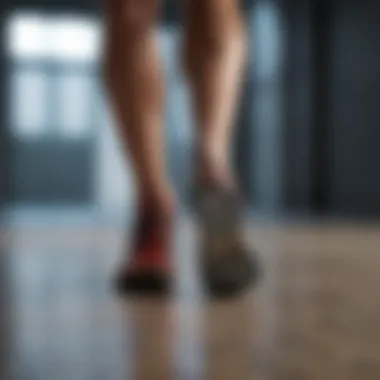

Rehabilitation Approaches
Rehabilitation approaches significantly contribute to treating and managing gait instability. These are designed to enhance mobility through targeted therapies.
Physical Therapy
Physical therapy focuses on improving physical function, strength, and coordination. This form of therapy is a comprehensive method to address gait instability by employing individualized exercise regimens. Its key characteristic is the tailored approach to each patient’s specific limitations and abilities. Physical therapy can be a beneficial choice because it actively involves the patient in the recovery process.
The unique feature lies in its combination of strengthening exercises, balance training, and education on safe movement practices. The advantage includes improved physical health and reduced risk of falls, while a disadvantage may be the commitment of time and the need for consistent practice outside of sessions.
Occupational Therapy
Occupational therapy aims at improving daily living skills, which can be significantly impacted by gait instability. The focus is on enhancing independence in everyday tasks. Its key characteristic lies in addressing specific functional goals. Occupational therapy can be a beneficial choice since it works not only on mobility but also on cognitive-motor integration.
A unique feature is the incorporation of real-life scenarios to practice skills. The advantage of occupational therapy is its holistic approach, considering both physical and cognitive aspects, while the disadvantage may be its variation in effectiveness based on individual engagement and participation.
Pharmacological Interventions
Pharmacological interventions can play a role in managing conditions that cause or worsen gait instability. These medicines may include muscle relaxants, anti-anxiety drugs, or other medications addressing specific neurological and orthopedic problems. However, their use must be monitored carefully due to potential side effects and interactions. In some cases, medications might improve stability but could impair cognition or coordination.
Surgical Options
Surgical options are considered for more severe cases of gait instability when other interventions have not yielded sufficient improvement.
Joint Reconstruction
Joint reconstruction refers to surgical procedures that repair or replace damaged joints. This option can significantly enhance stability and function. The key characteristic of joint reconstruction is its ability to restore joint mechanics, which is crucial for gait stability. This procedure can be a beneficial choice for individuals with degenerative joint diseases.
A unique feature is the potential for significant improvement in quality of life after recovery. The advantage includes the possibility of returning to pre-injury levels of activity, while the disadvantage encompasses the inherent risks of surgery and the required rehabilitation period, which can be extensive.
Neuromodulation Procedures
Neuromodulation procedures involve techniques such as deep brain stimulation or spinal cord stimulation. These interventions target underlying neurological causes of gait instability. Their key characteristic is the ability to modify neural pathways related to movement. Neuromodulation can be a beneficial choice for individuals with chronic gait issues unresponsive to traditional therapy.
The unique feature is its minimally invasive nature, often resulting in less recovery time compared to traditional surgery. The advantage lies in the potential for long-lasting relief from symptoms, while the disadvantage may include complexity of the procedure and potential side effects that should be considered.
Future Directions in Research
Understanding gait instability is an evolving field and future directions in research play a crucial role in advancing our knowledge. This section will outline promising avenues for exploration that may yield significant insights. As the population ages and the incidence of related conditions rises, continuous research becomes even more essential. It can lead to better diagnostics, treatments, and preventative measures aimed at improving mobility and quality of life for individuals affected by gait instability.
Emerging Technologies
Advancements in technology have introduced new avenues for tackling gait instability. Emerging technologies focus on creating tools that can enhance assessment and treatment. A critical aspect is the integration of data-driven approaches to refine our understanding of gait dynamics.
Wearable Sensors
Wearable sensors have emerged as valuable tools in monitoring gait and movement patterns. They provide real-time data which is essential for assessing gait instability. The ability to gather continuous data allows for a more nuanced understanding of an individual’s mobility issues.
A key characteristic of wearable sensors is their portability and ease of use. Patients can wear them in daily settings, making it possible to capture data in natural environments. This feature makes them a beneficial choice as the information gathered tends to reflect real-world challenges rather than isolated lab scenarios.
However, wearable sensors do have limitations. For example, their effectiveness may be influenced by battery life and user compliance. Additionally, data interpretation requires expertise to ensure meaningful conclusions can be drawn from the collected information.
Artificial Intelligence
Artificial intelligence offers a new dimension in analyzing gait instability. It can process large datasets to identify patterns that may not be immediately evident through traditional methods. By employing sophisticated algorithms, AI can assist in predictive analytics, helping clinicians understand likely outcomes based on gait analysis.
A key characteristic of artificial intelligence is its capacity to learn and adapt over time. This makes it a popular choice for enhancing rehabilitation programs. AI can customize approaches based on individual patient data, leading to potentially more effective treatment plans.
The uniqueness of artificial intelligence rests in its ability to integrate information from multiple sources. However, it also faces challenges, such as the need for high-quality data and potential biases in algorithms that must be addressed to maintain accuracy.
Interdisciplinary Approaches
Interdisciplinary approaches combine knowledge from various fields to address gait instability comprehensively. Collaboration among neurologists, physiotherapists, engineers, and data scientists fosters innovative solutions. By leveraging diverse expertise, researchers can develop holistic strategies that consider all facets of gait instability.
Longitudinal Studies
Longitudinal studies are vital for understanding the progression of gait instability over time. By tracking individuals across different stages of their lives, researchers can gather data that highlights trends, risk factors, and treatment outcomes. This long-term perspective is crucial for developing effective interventions and improving patient care.







